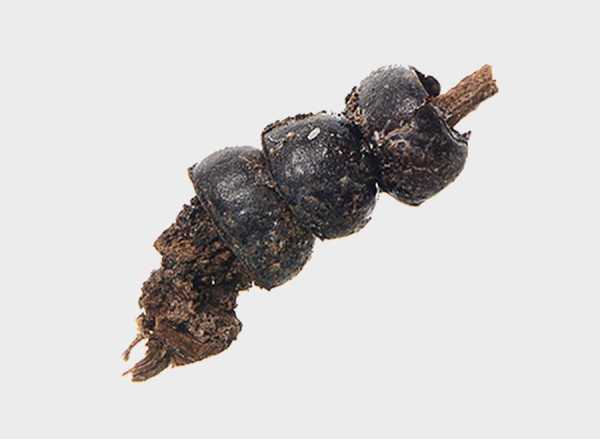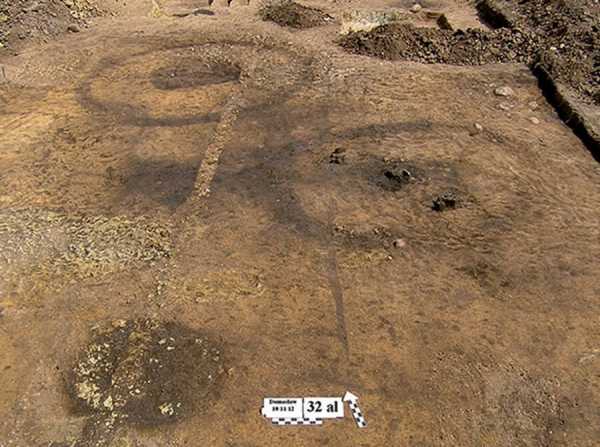This eye-catching artefact, made by stringing beetle exoskeletons onto a preserved blade of grass, may seem strange, but similar artefacts have been found across Europe on numerous occasions.

A. Halushko/AntiquityHigh-resolution image of the ventral side of an ancient beetle necklace found in Poland.
Archaeologists made the astonishing find while excavating a cemetery in Domaslaw, Poland, which dates back to the late Hallstatt period, between about 800 and 450 BCE. The huge burial ground, used by the Urnfield culture of the Lusatian era, contained around 800 burials, but it was number 543 that really caught the experts' attention.
The grave, which belonged to a child who died at the age of nine or ten, contained everything from goat and sheep bones to birch bark and dandelion pollen. But the most intriguing find was a necklace-like ornament made from beetles, detailed in a new paper published in the journal Antiquity.
The urn contained twelve complete exoskeletons and five partial ones, all belonging to the weevil species Phyllobius viridicollis. Most of them were strung on a preserved blade of grass. It quickly became clear that great care had gone into creating this strange relic.
First, the heads, legs, and abdomens were carefully removed from the exoskeletons. Then the remains were carefully strung on a blade of grass in the same position.
But how is it that this beetle necklace has survived so well after more than two millennia, given that organic ingredients are so easily susceptible to decomposition?
The researchers who made the find say the necklace could have been preserved by natural environmental conditions if there were indeed wetlands here 2,500 years ago. Wetlands are able to freeze organic matter over time due to their low oxygen and high acidity, which prevents the penetration of small aerobic organisms that initiate decomposition (the phenomenon that leads to the formation of bog bodies).
Another possibility is that the beetle necklace was preserved by bronze found nearby in the burial. When bronze corrodes, the copper it contains can kill bacteria, fungi, and other microorganisms, thereby preventing decomposition.
However, leaving aside its remarkable state of preservation, why was this beetle necklace placed in this grave in the first place?
Historical Prevalence of Beetle Ornaments and Their Meaning

A. Wozniak and A. Halushko/AntiquitySome vessels found in the ancient cemetery in Domaslav.
In none of these cases do the beetle remains have any particular symbolic significance. They may have been used as burial offerings because of their shine and durability. It is also possible that in the case of the necklace found in Poland, the beetle parts were simply an ingredient that happened to be on hand during the burial.
Experts do believe that the necklace was made specifically for burial, rather than being a keepsake. Since these beetles usually appear in May and disappear by July, it is likely that this child died in late spring or early summer.
The fate of this child is still shrouded in mystery, as is the exact meaning of the beetle necklace. But one thing is clear: this astonishing find continues to inspire admiration even after 2,500 years.
Sourse: www.allthatsinteresting.com





